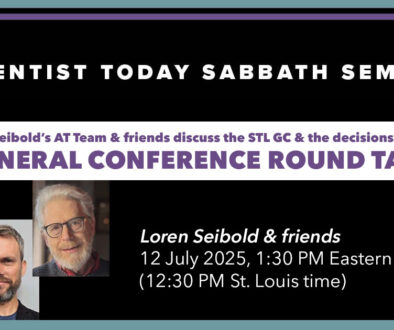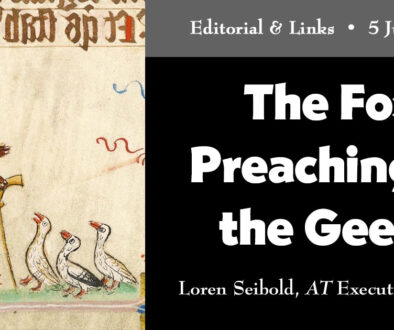Aunty, why is our church still racially segregated?
28 February 2022 |
Dear Aunt Sevvy:
Why are our congregations often racially segregated?
Signed, Concerned
Dear Concerned,
Your question is one that is often asked. Aunty asked one of AT’s excellent African American writers, Christopher Thompson, to address it.

“The simple answer is that we are naturally drawn to people with whom we have the most in common. Human beings see spiritual things through a cultural lens, so shared cultural experience has spiritual significance. This is human nature, which is why churches have found it difficult to blend and mix cultures effectively and appropriately.
“But please understand also that this separation was created by our history. The United States was racially segregated by law for nearly 100 years. Those laws were overturned only in the 1960s, and the effects of that period are still being felt. White flight is still real. Minorities are still expected to conform and assimilate to the mores of the dominant group when they integrate a space. Some churches still don’t embrace and include people of a different race.
“Early on African American leaders pleaded with the denomination for inclusion, leadership opportunities and culturally responsive ministry. Their entreaties were refused. Segregation was the order of the day, and Adventists were not exempt. Black Adventists were not permitted to eat in the GC cafeteria, nor were they allowed to enroll in white schools. After several major issues along these lines—namely the Lucy Byard incident—white church leaders offered a separate but equal solution.
“Denominational leaders may have anticipated that black-led institutions would fail, but they thrived and continue to this day. Oakwood University, the denomination’s only historically black university, has produced some of the most influential leaders the church has ever seen, leaders on the global stage. Minority-led conferences have led the evangelistic growth in North America for decades. Also, the nine minority-led conferences in North America account for roughly $200M in tithe annually. This is a significant portion of the NAD’s receipts and represents meaningful, valuable and well-sustained ministry efforts. If it ain’t broke, don’t fix it.
“While some clamor for unity and integration, few institutions have actually worked toward this end. The GC leadership doesn’t reflect the diversity of the church. Even where there are voices calling for changes, they struggle to demonstrate even locally how they might affirm and empower minority leaders to have unencumbered access and minister to specific cultural needs. Multiple institutions in the recent past have had issues with racial insensitivity, and while we think we should be beyond this, the headlines (even in our own denomination) demonstrate that we are not.
“(By the way, some have expressed the idea that minority-led institutions are themselves exclusionary. But having experienced racial discrimination and Jim Crow, African-American-led institutions have gone out of their way to welcome others into their fellowship. No group is denied entry on account of their race.)
“Looked at from a missional perspective, though, the current arrangement represents a solution to a persistent problem that has worked for nearly eighty years. Is it ideal? Absolutely not! But somehow, the church continues to grow. Given that the Lord is coming soon, might we make mission-readiness our primary focus, rather than an obsession with bad optics?
“In the meantime, let’s pray for better race-relations in our church and around the world, and for the dominant group in our church to be inviting, accepting, inclusive and affirming. When that kind of spirit begins to trickle down from the very highest offices, then maybe we’ll start to see it manifest in the local congregations, too.
“Until then, let’s keep working. Even so, come Lord Jesus.”
Thank you, Christopher!
Aunt Sevvy
 You can write to Aunt Sevvy at DearAuntSevvy@gmail.com. Please keep questions or comments short. What you send us at this address won’t necessarily be, but could be, published—without identification of the writer. Aunt Sevvy writes her own column, and her opinions are not necessarily those of Adventist Today’s editors.
You can write to Aunt Sevvy at DearAuntSevvy@gmail.com. Please keep questions or comments short. What you send us at this address won’t necessarily be, but could be, published—without identification of the writer. Aunt Sevvy writes her own column, and her opinions are not necessarily those of Adventist Today’s editors.
 Christopher C. Thompson writes about culture and communication at thinkinwrite.com. He’s the author of Choose to Dream. When not writing, he’s jogging or binge-watching Designated Survivor. He’s married to Tracy, who teaches at Oakwood University.
Christopher C. Thompson writes about culture and communication at thinkinwrite.com. He’s the author of Choose to Dream. When not writing, he’s jogging or binge-watching Designated Survivor. He’s married to Tracy, who teaches at Oakwood University.




